|
|
|

Pleiospilos simulans is a mimicry plant know as "African living
rock" or “Splits rock” because it imitates split chunks of granite
(especially if grown in full blazing sun and in time of drought) It
resemble stones so
closely that it can only be found with difficulty.
|
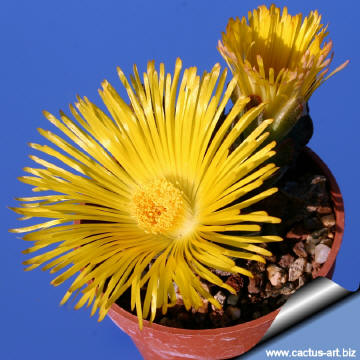 |
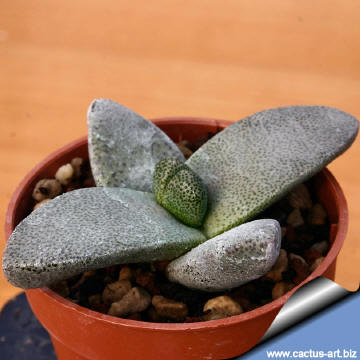 |
|
. |
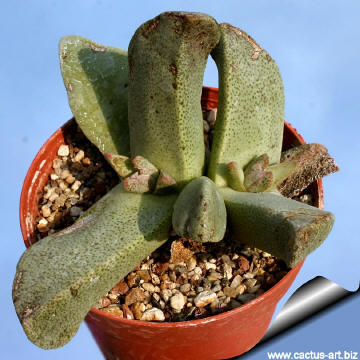 |
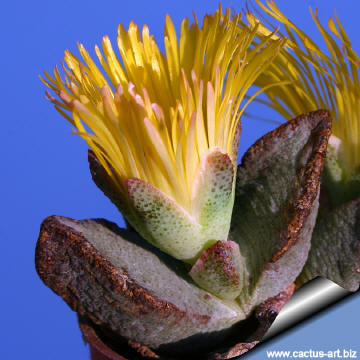 |
|
. |
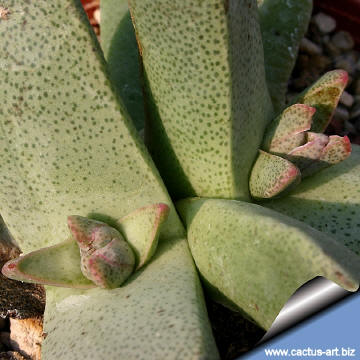 |
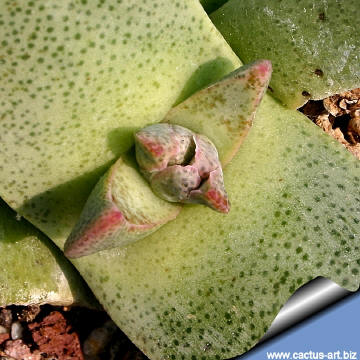 |
|
Advertising
|
|
|
|
Family: Mesebrianthemaceae (Aizoaceae)
Scientific name:
Pleiospilos
simulans (Marl.)
N.E. Brown 1926
Origin: South Africa
(Cape Province: Aberdeen)
Habitat: Grows in
rock crevices in areas with about 300 mm rainfall per annum in March and
November where light is usually bright and
unpolluted.
Vernacular Names: Split Rock Plant, Liver plant, Stone plant.
Etymology: The genus name is derived from the greek words
pleios (full) and spilos (dots), which
refers to the many dots on the plants.
The species name “simulans” come from a Latin word meaning
"imitating" or "resembling" for having
the resemblance of pieces of rock.
Taxonomic
Synonyms:
- Mesebrianthemum
simulans Marloth 1907
- Pleiospilos
leipoldtii
|
|
Description:
Pleiospilos simulans is a slowly clump-forming succulent and one
of the more unusual Pleiospilos species. One of the largest of the
species suited for hot sunny positions.
Stem: Stemless or very
short with 1 to 3 branches (Often more brached in cultivation)
Body (Leaves) :
The body of the plant consists of
1 or 2 (but sometime more in cultivation) pairs of leaves. The leaves
are grey-green to brownish-grey, triangular in cross section, very
flat-opening, spreading, heavily keeled reminiscent of a wide-open
serpent's jaws, broader than thick, about 7- 8 cm long, 3 cm large and 2
cm thick. The leaves are not as symmetrical and firm as the others
Pleiospilos and fleshy with the consistency of rotten meat or weird
rubber. The epidermis has a texture like sharkskin looking something
like a cross between a Gasteria and a Lithops, with numerous dark-green
dots on the upper surface.
Flowers: Scented, daisy-like,
yellow to orange flower with a
white centre, Considering the size of the plan
they are extremely large (up to
6 cm in diameter), sometimes in
group up to 4 borne on short pedicels
Blooming season: Late summer or early autumn
after the summer dormancy period. The blooms open in mid-afternoon and
close just after sunset.
Fruit: Mostly 12 loculed.
|
|
|
|
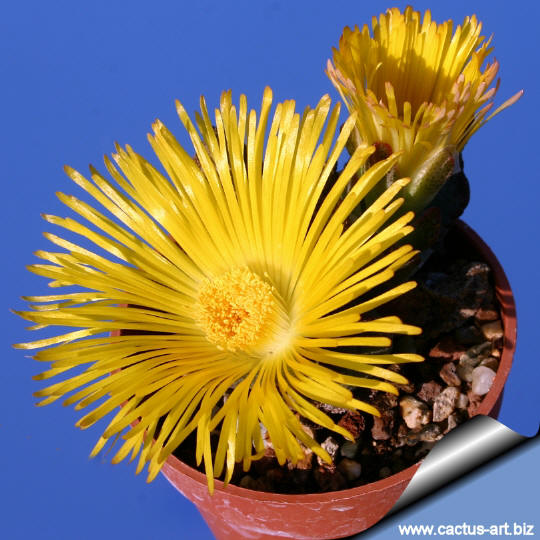
They are very easy to grow and very cute when
in flower.
|
|
Cultivation: Pleiospilos nelii is a very adaptable plant, it will
grow whenever it has water and good sunlight, but it will become dormant
in very hot weather to conserve water. It need full sun to light shade
with a very open compost that drains quickly. The container should be at
least 10 cm deep to accommodate the long tap root. Very little water is
needed during the growing season, and we do not fertilize the plants. In
late summer to early fall before nighttime temperatures fall, watering
of the plants is stepped up to once a week. When the nighttime
temperatures drop to 9°C, watering is restricted throughout the winter
months. In the winter, it grows new leaves from the center of the split,
and the new leaves then consume the old leaves. If the plant is over
watered, the old leaves remain and the plant usually rots and dies. Not
to water it when it is splitting, just leave it alone. Even with no
watering the leaves don't shrink and prune up like some succulents do
when they are not watered they stays plump even after several months
with no water. For an idea of how succulent these plants are, a mature
specimen can easily go a whole year without any water in a typical
European or North American climate. If the plants are grown correctly,
ideally there should only ever be 2 pairs of leaves. The lower ones are
the previous years, and the top ones, the current years. One sign of
good care is a firm, round, symmetrical plant with no old leaves still
attached at the end of summer. The plants are hardy down to -5°C.
Propagation: Seeds or by division in early spring before new
growth starts. One should not divide clumps too often because they bloom
best when crowded.
Sometimes Pleiospilos will even be labelled as a Lithops, but it isn't
the same. There are three immediate visual differences: P. nelii does
not grow buried to its neck in the ground; it is bigger than any Lithops
and will produce multiple flowers at once, something that Lithops never
do.

 |
|